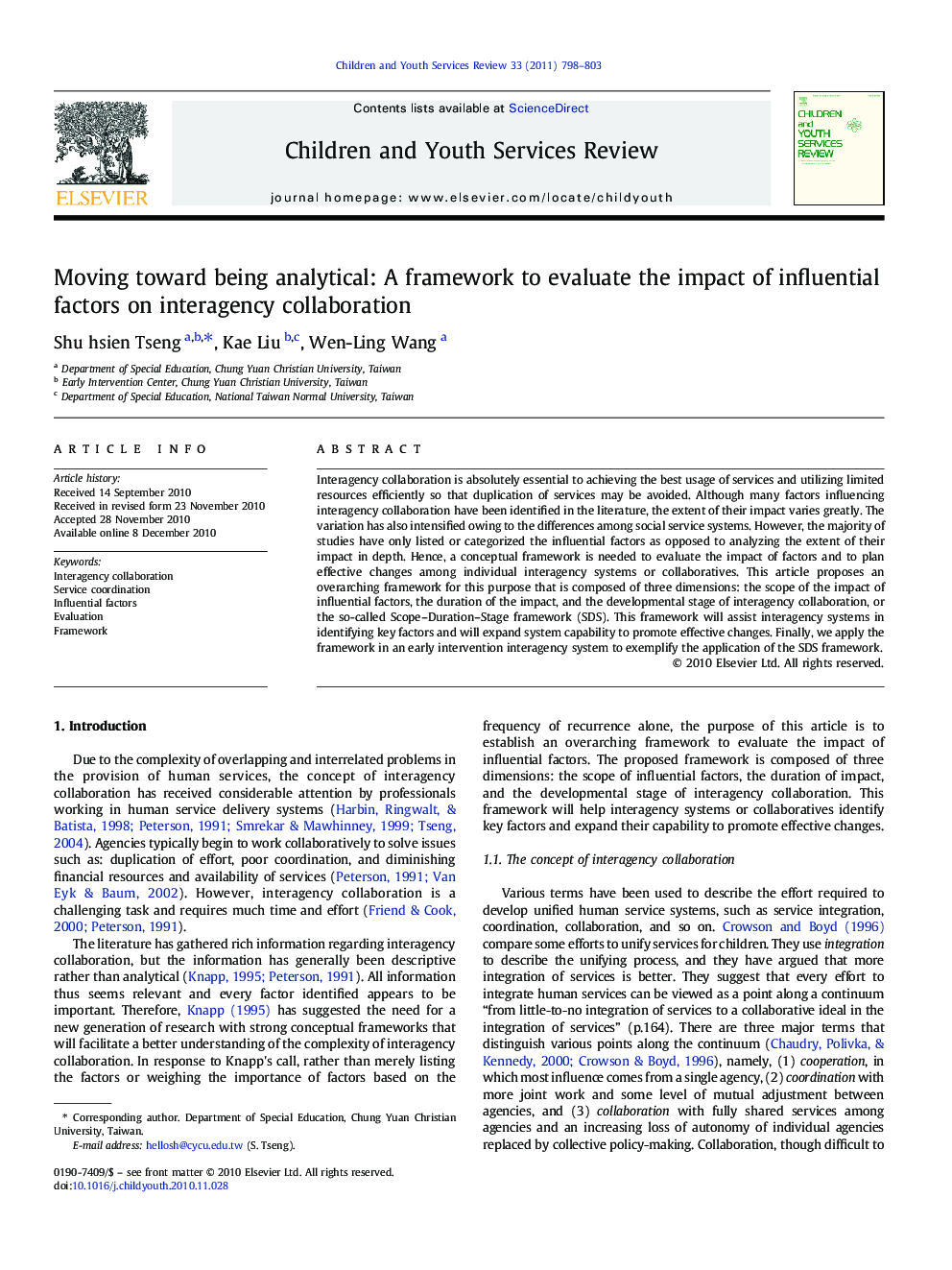| Article ID | Journal | Published Year | Pages | File Type |
|---|---|---|---|---|
| 347322 | Children and Youth Services Review | 2011 | 6 Pages |
Interagency collaboration is absolutely essential to achieving the best usage of services and utilizing limited resources efficiently so that duplication of services may be avoided. Although many factors influencing interagency collaboration have been identified in the literature, the extent of their impact varies greatly. The variation has also intensified owing to the differences among social service systems. However, the majority of studies have only listed or categorized the influential factors as opposed to analyzing the extent of their impact in depth. Hence, a conceptual framework is needed to evaluate the impact of factors and to plan effective changes among individual interagency systems or collaboratives. This article proposes an overarching framework for this purpose that is composed of three dimensions: the scope of the impact of influential factors, the duration of the impact, and the developmental stage of interagency collaboration, or the so-called Scope–Duration–Stage framework (SDS). This framework will assist interagency systems in identifying key factors and will expand system capability to promote effective changes. Finally, we apply the framework in an early intervention interagency system to exemplify the application of the SDS framework.
Research Highlights►We propose a framework to evaluate interagency collaboration and to plan effective changes. ►There are three dimensions: scope, duration, and the developmental stage of interagency collaboration. ►The framework is called Scope-Duration-Stage framework (SDS). ►The framework will identify key factors and expand system capability to promote effective changes. ►A case example in an early intervention interagency system exemplifies the application of the framework.
